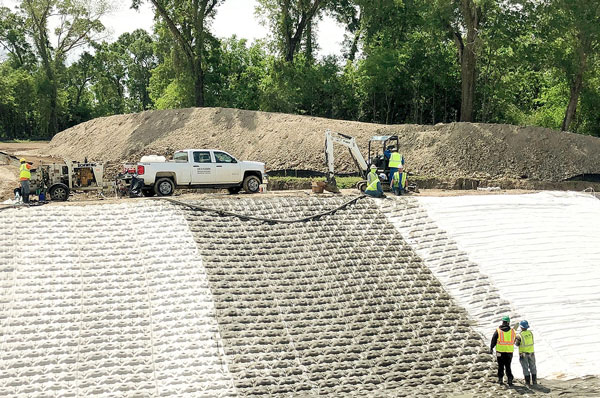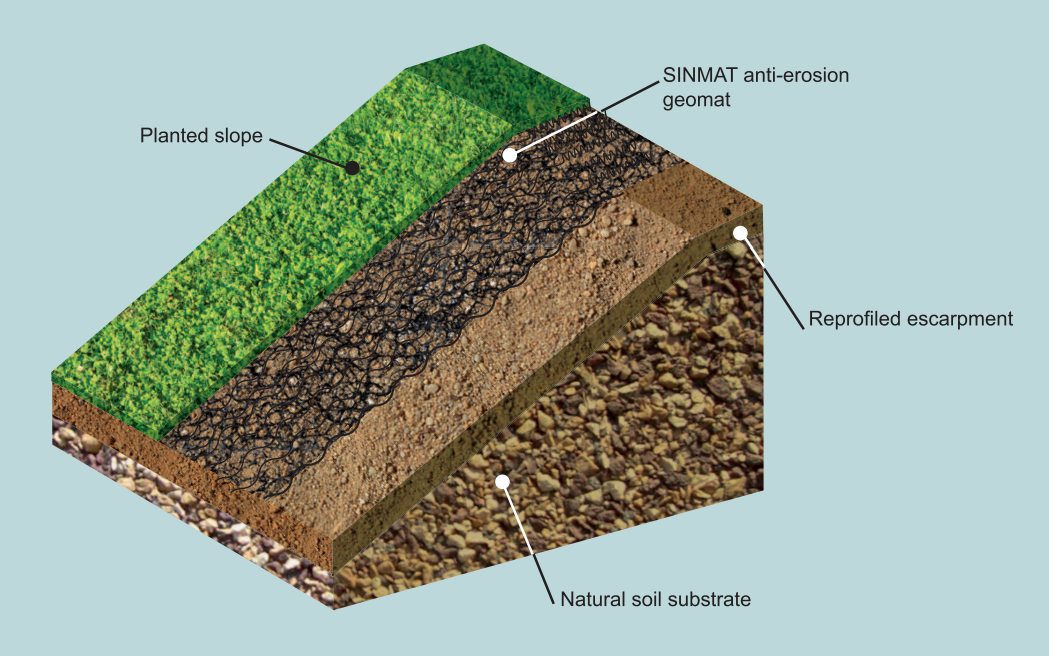Hydroseeding Solutions: A Greener Approach to Land Management
Wiki Article
Ideal Practices for Erosion Control in Construction Projects
Are you servicing a construction project and worried concerning erosion control? Look no additional! In this short article, we will direct you with the very best methods for preventing erosion on your site. You'll uncover 5 necessary strategies, efficient sediment and runoff monitoring methods, essential factors to consider for slope stabilization, and ideas for safeguarding vegetation and dirt. We'll also dive right into the significance of applying appropriate drain systems. Get prepared to tackle disintegration head-on and make sure the success of your building and construction task.5 Essential Disintegration Control Techniques

To effectively control erosion on your building and construction website, you'll need to carry out vital techniques such as incline stabilization and sediment control measures. Slope stablizing is crucial in avoiding soil erosion on steep slopes. You can achieve this by making use of methods like terracing, which includes creating straight actions on the slope to slow down water circulation and promote the absorption of rain. One more effective technique is making use of erosion control coverings or floor coverings, which are put on the slope and aid keep soil fragments while permitting vegetation to expand. Debris control procedures are also essential to stop debris overflow right into nearby water bodies. One efficient method is the installation of silt fencings along the boundary of the building site. These fencings work as obstacles, catching sediment-laden water and enabling it to work out prior to it gets to the water bodies. In addition, you can utilize sediment basins, which are short-term retention ponds created to catch debris and allow water to gradually drain pipes off. Implementing these crucial disintegration control techniques will aid lessen the unfavorable environmental influence of your building and construction job and make certain compliance with guidelines.
Effective Sediment and Overflow Administration

You can properly manage debris and drainage in your building project by carrying out appropriate erosion control steps. Sediment and runoff monitoring is vital to stop erosion and protect the surrounding atmosphere. One efficient action is the installation of silt fences along the perimeter of the building site. These fences help to have sediment and stop it from going into nearby water bodies. One more important technique is the application of disintegration control coverings or floor coverings. These blankets give a safety layer on bare soil, lowering the effect of rainfall and stopping erosion. Additionally, the use of sediment containers or debris traps can assist to catch sediment and avoid it from entering stormwater systems. Regular upkeep of these steps is necessary to ensure their efficiency throughout the building task. This consists of checking and cleansing sediment basins and regularly changing silt fences and disintegration control blankets as needed. By applying these disintegration control procedures, you can effectively take care of debris and drainage in your building job, decreasing the influence on the setting and abiding by governing demands.
Secret Considerations for Incline Stablizing
When considering incline stabilization, it is essential to assess the terrain and identify possible areas of instability. You require to thoroughly take a look at the slope's features, such as its angle, make-up, and water drainage patterns. Search for signs of erosion, such as revealed roots, splits, or slumping dirt. These indications can give you my sources an idea of where stabilization steps may be essential.When you have actually identified the unsteady areas, you can start implementing actions to support the incline. One typical approach is using keeping walls or terracing to produce a collection of level steps, which can help disperse the weight and stop further disintegration. One more option is to grow greenery on the incline, as the roots can assist secure the dirt and control erosion. Additionally, installing erosion control coverings or floor coverings can offer instant protection while vegetation ends up being well-known.
It's vital to routinely monitor the stabilized slopes to guarantee their effectiveness. Watch out for any kind of indicators of motion or disintegration, and take instant activity if required. Regular maintenance, such as inspecting and repairing any broken measures, is likewise vital to ensure long-lasting security.
Best Practices for Plants and Dirt Protection
If necessary,One effective method to safeguard vegetation and soil on slopes is by routinely examining for indications of disintegration and taking prompt activity. By being proactive and watchful, you can protect against more damage and make certain the stability of the slope. Beginning by checking the slope for any type of signs of erosion, such as subjected origins, bare soil patches, or debris accumulation at the base. It is important to attend to the issue immediately if you discover any of these indicators. Implement disintegration control procedures such as mounting artificial outdoor landscaping erosion control coverings, mulching, or also building retaining walls if required. Furthermore, growing plants can dramatically aid in supporting the soil. Select indigenous plants that have deep root systems, as they are a lot more effective find more info in avoiding erosion. Make certain to consistently analyze the health and wellness of the plant life and supply necessary maintenance, like watering and feeding. Remember, disintegration can promptly aggravate and cause extreme damage, so it's important to resolve it asap. By taking positive measures and frequently keeping track of the slope, you can secure the greenery and dirt, making certain the lasting security of the location.Executing Appropriate Drain Systems
When it comes to handling water flow and stopping disintegration, comprehending these elements is vital. Steeper slopes can lead to faster water circulation, boosting the danger of erosion and flooding. On the various other hand, gentler inclines enable water to stream a lot more slowly, decreasing erosion possibility.Sandy soils tend to drain pipes faster due to their rugged appearance, while clay soils have a slower drain price due to their small nature. Furthermore, considering the soil features helps stop waterlogging, which can lead to poor plant development and damage to structures.
Final Thought
In verdict, when it comes to disintegration control in construction projects, you must follow these ideal techniques. Think about incline stablizing techniques to guarantee the stability of the website. By adhering to these essential practices, you can properly regulate disintegration and ensure the success of your construction task.To successfully manage erosion on your building and construction site, you'll need to apply crucial strategies such as slope stabilization and debris control actions. Incline stabilization is critical in protecting against soil disintegration on steep inclines. One more effective strategy is the use of erosion control coverings or mats, which are positioned on the slope and aid retain dirt fragments while enabling vegetation to expand. Another choice is to plant plants on the incline, as the roots can aid anchor the dirt and control erosion. Implement disintegration control measures such as mounting erosion control coverings, mulching, or even building retaining wall surfaces if required.
Report this wiki page